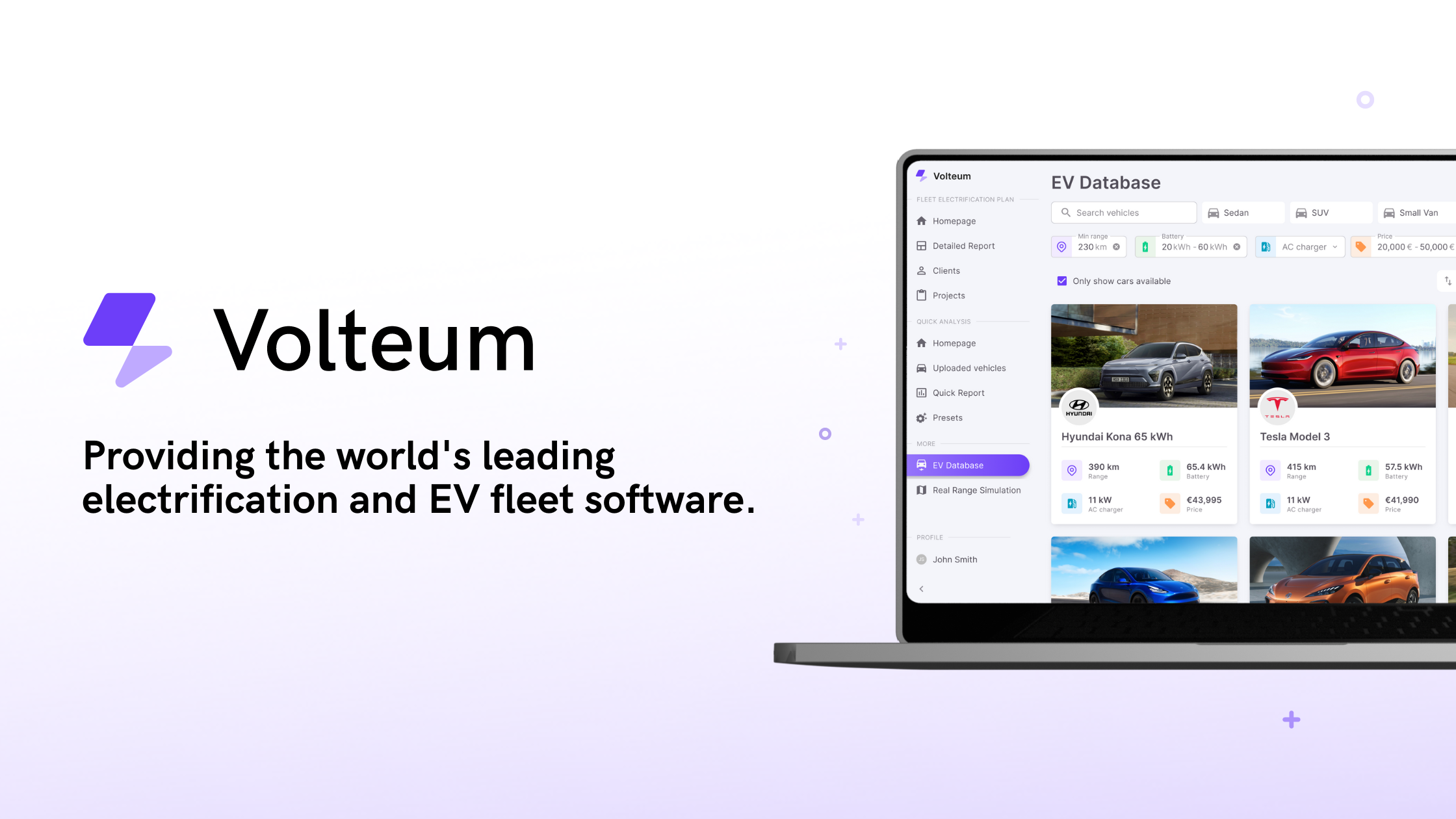What the UK ZEV Mandate means for fleet operators
Mar 30, 2025 · 8 min read · blog
In January 2024, the UK government introduced a game-changing regulation that’s already reshaping the future of commercial mobility: the Zero Emission Vehicle (ZEV) Mandate. Under this new law, car and van manufacturers are now required to sell a growing percentage of zero-emission vehicles every year—starting with 22% of new car sales and 10% of van sales in 2024, and ramping up to 100% by 2035. This phased approach is part of the UK’s wider strategy to meet its net-zero commitments, with targets reaching 80% of car sales by 2030.
While the original deadline for a full ICE vehicle ban was moved from 2030 to 2035, the current government is under pressure to bring it back forward. This makes the ZEV Mandate not only ambitious but also politically volatile — and its future trajectory may still shift based on upcoming reviews and lobbying efforts.
While headlines have focused on how this affects automakers, there’s another side to the story that isn’t being talked about enough: what this means for fleets. For companies operating large vehicle fleets, the ZEV Mandate isn’t just a policy — it's a signal that the transition to electric needs to accelerate now, not later. And with it comes new pressure, new complexity, and new opportunities.

From regulation to reality: why the ZEV Mandate matters for fleets
For fleet operators, the implications of the ZEV Mandate go far beyond compliance. As OEMs shift their production pipelines toward electric vehicles to meet legal targets, the availability, pricing, and lead times of ICE vehicles are expected to change — and not necessarily in your favour. At the same time, pressure is mounting on businesses to align with internal sustainability goals and external climate commitments. Whether you are running delivery vans, service vehicles, or passenger cars, the message is clear: electrification is no longer a future project — it’s a present priority. The challenge? Making the transition without disrupting operations, overspending, or falling behind competitors who are already embracing the change.
Inside the ZEV Mandate: what you need to know
While the ZEV Mandate may feel like just another piece of policy, it’s shaping up to be one of the most influential regulations in the UK automotive space. Here’s what’s at stake:
- What is it? The ZEV Mandate is a UK regulation that requires manufacturers to sell an increasing proportion of zero-emission vehicles each year — 22% of cars and 10% of vans in 2024, rising to 100% by 2035.
- Why now? The mandate is designed to push the UK closer to its net-zero goals and align with global targets, but it comes at a time when EV adoption is still lagging behind expectations.
- How strict is it? While the law includes some flexibilities (like credit trading, banking, borrowing, and conversion quotas), manufacturers that fail to comply may face significant financial penalties. Industry groups have warned that non-compliance costs could reach into the billions annually if EV sales don’t keep pace with targets — putting real pressure on OEMs to shift production and pricing strategies quickly.
- Is it changing? The mandate is currently under government review, following backlash from automakers who claim it's unsustainable without stronger incentives for consumers.
- Why does it matter to fleets? These pressures on OEMs directly affect vehicle availability, lead times, and ICE pricing — all of which can disrupt long-term fleet planning.
For fleet operators, this means the ripple effects of the mandate are already being felt — and understanding the broader regulation is key to making smart, timely decisions about electrification.

The real-world challenges fleets face with electrification
While the ZEV Mandate accelerates the urgency to electrify, fleet managers are still facing significant operational and strategic roadblocks. Here are some of the most common challenges we see across industries:
- Uncertainty around EV suitability: Not every EV on the market fits every use case. Fleets need to understand which electric alternatives can realistically replace their ICE vehicles — especially as manufacturers adjust their line-ups to comply with ZEV targets that are still being reviewed and may shift again.
- Total Cost of Ownership (TCO) is hard to calculate: Comparing internal combustion engine vehicles to electric vehicles is not straightforward. Variables such as purchase price, charging costs, maintenance, insurance, and residual value vary widely depending on vehicle type, location, and usage patterns.
- Lack of visibility into charging infrastructure needs: Many companies struggle to predict how many chargers they will need, what type, and where they should be installed. Planning without this clarity leads to over- or under-investment.
- Data overload — or no data at all: Some fleets have access to large volumes of telematics or fuelling data, while others rely on basic spreadsheets. In both cases, turning that data into actionable insights for electrification is a complex task.
- Operational risk during the transition: The fear of downtime, range anxiety, and missed deliveries makes it difficult for teams to feel confident about switching to electric vehicles — especially when operations are running on tight schedules.
- Limited internal resources and EV expertise: Most fleet teams are already stretched thin. Adding electrification to their responsibilities — without expert support or automation — can overwhelm operations and delay progress.
These challenges are real, and they are slowing down progress for many fleets — but they are also solvable. With the right data, tools, and strategy in place, fleet electrification can become not only manageable, but genuinely rewarding. This is exactly where Volteum comes in.

How Volteum supports your electrification journey — from strategy to operations
At Volteum, we work with fleet operators across Europe who are navigating exactly these challenges — and we have built our products to address them head-on. Whether your company is just starting to explore electrification or already operates electric vehicles and needs to optimize daily operations, our software solutons are designed to make the entire process data-driven, cost-efficient, and easy to manage:
- Electric Fleet Planner — For companies preparing to electrify: Analyse your current operations, build a cost-optimised electrification strategy, compare EV alternatives, and plan your charging infrastructure. This tool helps you set realistic targets, avoid overspending, and make data-backed decisions from day one.
- Electric Fleet Operations — For companies already operating electric vehicles: Manage day-to-day EV operations with intelligent charging schedules, energy forecasting, and live monitoring. This tool helps you maximise vehicle utilisation, reduce costs, and eliminate disruptions — even with fewer chargers than vehicles.
Together, these tools give fleet managers the visibility, confidence, and control they need to move from planning to execution — and to stay ahead in a rapidly evolving landscape.
Turning regulation into opportunity
The ZEV Mandate is not just a regulatory hurdle — it is a moment of transformation for the fleet industry. Companies that act early will not only stay ahead of compliance but also unlock operational savings, gain competitive advantage, and contribute meaningfully to a more sustainable future. But getting there requires more than ambition — it requires the right tools, the right data, and a partner who understands the full picture.
At Volteum, we are here to support you through every stage of your electrification journey. Whether you are setting your strategy or fine-tuning your operations, our software is built to help you succeed — without compromise.
Ready to future-proof your fleet? Let us show you how. Book a personalised demo today and see how Volteum can help you turn the ZEV Mandate into a strategic advantage.
Update (April 2025): Since the publication of this post, the UK government has introduced significant changes to the ZEV Mandate. Hybrid vehicles will now remain on the market until 2035, and some of the regulatory flexibilities, such as reduced fines and new credit systems, may impact fleet planning. To stay informed on these latest updates and how they affect fleet electrification, check out our new blog post: ZEV Mandate changes in 2025: What fleets need to know.